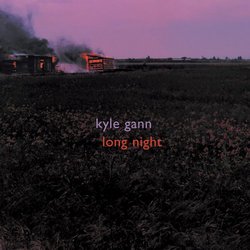Early lyricism
scarecrow | Chicago, Illinois United States | 10/20/2005
(5 out of 5 stars)
"I didn't know this work of Gann,the piano has held a fascination for his creativity; it is early from 1980-1981,yes the drifting in and around/ about inside outwards, incessantly a few tones proclaimed, like one the Scratch Orchestra's credo, "take a tone/timbre and follow it. . . " but here you need to know how much to follow,when and how to change or give up,go somewheres else;introduce new materials into the welter of the lyrical discourse herein, the proceedings are always beautiful, and Gann certainly practices what he preaches, that modernity, and all the :post: and :after-post modernity:(a Hal Foster term) modernities are over,and have adequetely played themselves out, so why not write music you like, or are simply interested in, no conceptual baggage required, and post-modernity phase, its cadre did get rather self-indulgent where the concept was more interesting than the results,the results have been exciting most of the time but in the visual arts, the popular avant-garde is a dead end,faster than all the other "gardes" or High Modernity like an interesting elaborate dinner setting where the food never comes. Here there is plenty to gaze at and listen to, Gann likes his materials to be unencumbered,unlabored,loose, without theoretical anything about it, lying inside it; so you never sense any deep poly-rhythmic agendas at work or if there are ,it is merely on paper.Gann has been interested in rhythm all his life especially the :Desert Sonata: where a 41 tone American Indian song is the focus, fugue-like, and the Two piano "Itoi Variations".
Sarah Cahill plays very well, never making a harsh tone,never rendering a trumpet timbre, all flute-like and glockenspiel; nothing is dry, like walking in one of William Eggleston's elegant yet provincial downhome photos, rich greens and blues.Gann also saves the low basso regions for great places in the work,Melodies do emerge, or fragments of them, simple scales steps, evocative to an extent, but it goes away as quickly as it returns,the piece never really provlaims an image, merely an ambience, a "feel" I guess,like visiting a place, and the spiritual qualitieis that reside in a "place", as Lucy Lippard has told us; The piano timbre as well maintains itself within a shortened field of color, nothing is "harsh" or obtrusive here,thorny or questionable Gann's aesthetic strategy doesn't allow it; except for the on-going-ness of the work,the inevitable-ness that we keep going,not stopping that it never lets you leave its seduction its timbre.You really cannot experience here the three pianos, on a CD it all sounds like one single instrument.And I really don't think I would prefer this work LIVE anyway,it merely places itself inside you, and perhaps that is Gann's ultimate agenda, creates a music that clings to you,nothing you hate, or come to like, merely something there,as an old photo,we cannot throw away,it marks a place we love,so to with beautiful timbre, we cannot throw it away, even if it doesn't lead toward a string of orcherstral commission, this is far more important work anyway, discovering your voice within beauty.I think Adorno had he lived would have agreed with this, find a voice,do not follow the buzz' This is a very different kind of minimalism than say the late Feldman where there you still had rhythmic games/exergue at play, it was a way he found his voice in the current buzz of minimalisms,fashionable language of what Ernest Mandel referred to as the cultural products of "late capitalism" but again he(Feldman) found his voice there as well, bringing a different content/context to the ideology of the re-iterated event. Gann as well finds a place here, sometimes the piano timbre is too beautiful, well for me, I found myself having to clean house the more I listen like nothing can be out-of-place., or asymmetrical.You come away from the work haven't walked someplace."
Get this CD now!
Lucia Mirto | San Francisco, CA USA | 09/24/2009
(5 out of 5 stars)
"I bought this CD last year, heard it once and put it on the shelf near many others (sounds familiar?), yet its sound kept haunting me.
Tonight, I just missed it.
Instinct, I suppose.
Ah, and the cover, the fantastic cover... (Who said never judge a book by its cover? I do it ALL the time, with great results!)
After all these years, perhaps only now I am understanding the art of finding the right time to listen to a CD.
The time for Long Night was *now*.
Sarah Cahill is perfect: a diamond cutter. Just listen to her enchanting tone, fix the cover, fall in trance, meander, imagine.
Get this CD now and it will never leave you. Simply put: it is a miracle."


 Track Listings (1) - Disc #1
Track Listings (1) - Disc #1